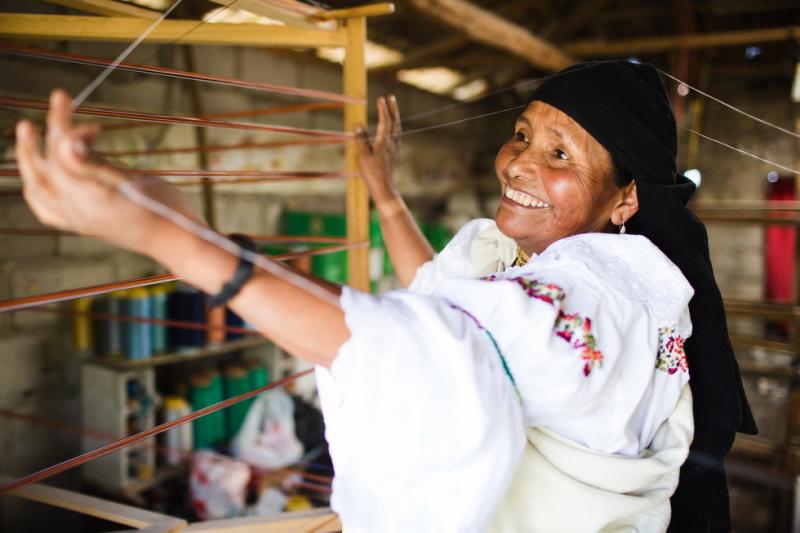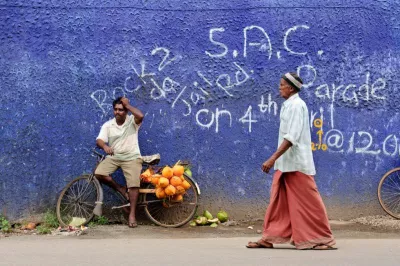Global Findex: Income Gap Persists Amid Rising Account Ownership
If you want to see what it means to join the financial system, head to Santiago Nuyoo, a small town nestled in the rolling green mountains of southern Mexico.
Claudia Santiago runs a shop on the dirt road that cuts through the town’s center. For years, she struggled to manage her business without access to a bank account. She had no safe place to keep her earnings.
That all changed recently, when Claudia joined the formal financial system with the help of a mobile money account accessed through her mobile phone.
“Before it was difficult for us to go to Tlaxiaco, the closest city and open a bank account because of the cost of transportation and our time,” Claudia said. “Now we have a bank account linked to our phone.”
Stories like Claudia’s are unfolding in towns and villages across the world. As we show in the newly updated 2014 Global Financial Inclusion database, 700 million adults worldwide have joined the financial system in the last three years. Globally, 62 percent of adults now have an account, up from 51 percent in 2011, when we launched the Global Findex, the world’s most comprehensive gauge of global progress on financial inclusion. At the same time, the number of unbanked adults dropped by one-fifth, to 2 billion.

In many countries, the poor have joined this worldwide march toward financial inclusion. That’s true in Mexico, where account ownership among adults in the poorest 40 percent of households more than doubled, to 29 percent. Comparable increases occurred in Indonesia, Zambia, Vietnam, and many other countries.
As the poor catch up with the rich, the income gap is narrowing. In developing economies overall, 46 percent of adults living in the poorest 40 percent of households have an account – up from 29 percent in 2011. Meanwhile, 60 percent of adults living in the richest 60 percent of households have an account. True, these groups are still separated by a wide gap; but it has decreased by 6 percentage points from three years earlier.
Here’s the catch: The income gap gets a bit more complicated when you break it down by region. Its shrinkage stemmed mostly from rapid account growth in East Asia and the Pacific, where surging account ownership among the poor helped cut the regional income gap in half. China played a big role. Account ownership among Chinese adults living in the poorest 40 percent of households rose by 26 percentage points, to 72 percent.
In every other region, the gap remained mostly unchanged, ranging from 17 percentage points in Latin America and the Caribbean to 14 percentage points in South Asia. This is true despite the fact that account ownership among the poor increased in every region.
The income gap isn’t just a problem for developing economies. It plagues some rich economies, even though account ownership among the poor there is almost universal. Take the G7: In Canada, France, Germany, Japan, and the United Kingdom, there is no gulf between the rich and poor when it comes to account ownership. But the same doesn’t go for the United States, where account ownership among the poor is not universal and the nation struggles with an income gap of 10 percentage points. Similarly, account ownership is not universal among the poor in Italy, which has a 7 percentage point income gap.
Today, most of the 2 billion unbanked adults are like Claudia – low-income women who live in rural areas. About half belong to the poorest 40 percent of households, and 55 percent are women. The vast majority of unbanked adults – 66 percent – live in the countryside.
Governments and businesses across the world are already helping bring these people into the financial system. For example, Kenya and Cote d’Ivoire are sealing the income gap the same way Claudia did, with mobile technology. Both countries face a large income gap in financial institution account ownership, but the gap closes when you look at mobile money accounts: Adults in the poorest 40 percent of Kenyan households are actually 13 percentage points more likely to have a mobile money account than those in the richest 60 percent.
Digital payments of government wages and social benefits made into accounts are also driving strong increases in account ownership in several countries, including Brazil, where according to CGAP (Focus Note 77) the flagship anti-hunger program serves almost a third of the population and 99 percent of payments are made electronically.
The Global Findex reveals a number of opportunities to build on this progress. In developing countries, 80 million unbanked adults in the poorest 40 percent of households receive government wages or transfers such as unemployment benefits in cash. At the same time, 220 million adults in these households are paid in cash for the sale of agricultural goods. Digitizing these payments could drive a big increase in account penetration – and help the poor take control of their financial lives.
Banking 2 billion adults won’t be easy. But Claudia – and the other 700 million new account owners around the world – show that it’s within reach.
“Now the technology’s here in a town in the middle of the mountains, and it’s making our lives easier,” Claudia noted.




Comments
Thank you for this article.
Thank you for this article. However, why does it say income gap when it actually refers to an account penetration gap?
Add new comment